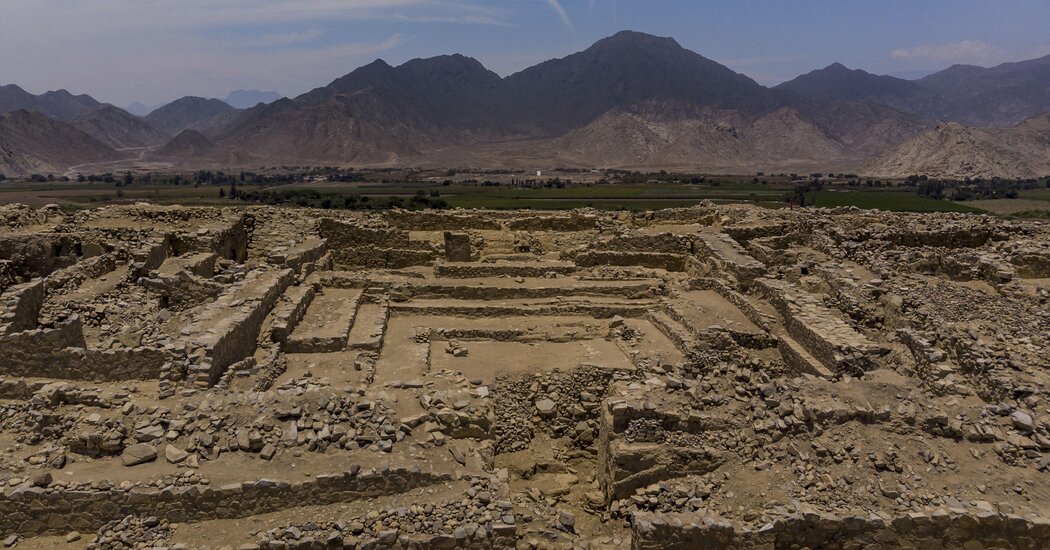From the Roman Empire to the Maya civilization, history is filled with social collapses. Traditionally, historians have studied these downturns qualitatively, by diving into the twists and turns of individual societies.
But scientists like Philip Riris have taken a broader approach, looking for enduring patterns of human behavior on a vaster scale of time and space. In a study published Wednesday, these methods allowed Dr. Riris and his colleagues to answer a profound question: Why are some societies more resilient than others?
The study, published in the journal Nature, compared 16 societies scattered across the world, in places like the Yukon and the Australian outback. With powerful statistical models, the researchers analyzed 30,000 years of archaeological records, tracing the impact of wars, famines and climate change. They found that going through downturns enabled societies to get through future shocks faster. The more often a society went through them, the more resilient it eventually became.
“Over time, you will suffer less, essentially,” said Dr. Riris, an archaeologist at Bournemouth University in England. “There tends not to be wholesale collapse.”
The researchers tracked the history of societies by taking advantage of the way archaeologists tell time. Most organic material, whether it’s charcoal or mussel shells, contains trace amounts of radioactive carbon-14, which gradually breaks down over thousands of years. By measuring the carbon-14 left at an archaeological site, researchers can estimate its age.
This approach can also track population changes. As human groups get bigger, they burn more wood, eat more food and leave behind more garbage, all of which can be dated. When those groups shrink, their sites become rarer.
Dr. Riris and his colleagues gathered information on more than 40,000 carbon-14 measurements from 16 populations. They then looked at all of the societies for signs of sudden crashes and major rebounds.
Every population suffered downturns. Some lasted only a few generations, while others went on for far longer. Around 8,200 years ago, the Near East suffered a population crash and did not recover for more than 2,000 years.
The ways in which people had lived led to different rhythms of collapse and growth. Societies that had raised livestock or farmed the land grew more quickly, but they also became more prone to downturns. Dr. Riris speculated that growing crops or tending herds of animals had made people more vulnerable to changes in the climate.
John Haldon, a historian at Princeton who was not involved in the new study, was struck by how many of the downturns coincided with climate change. “What it tells us is that climate is our biggest weak spot,” he said.
Dr. Riris and his colleagues looked for factors that explained why societies in some cases suffered long, deep downturns, while others experienced smaller drops in their populations and bounced back more quickly.
One feature that stood out was the frequency of downturns. You might expect that going through a lot of them would wear societies down, making them more vulnerable to new catastrophes. But the opposite seems to have occurred; societies that experienced frequent downturns went on to become more resilient, experiencing less severe falls and faster recoveries.
The study suggests that societies in the Korean Peninsula, the central plains of China and the Caribbean, in particular, displayed an enhanced ability to recover.
The pattern of increased resilience in the face of repeated stressors is similar to what ecologists see when they look at the history of forests. Ecosystems that go through frequent disturbances become the most resilient. People are not trees, of course, and so Dr. Riris and his colleagues are not sure why societies also show this pattern.
Dr. Riris speculated that during downturns, societies learn how to survive, and then pass that knowledge down to future generations.
“That led to innovations — or technologies or practices or behaviors or know-how or traditions — being adopted that enabled them to do better the next time something bad rolled around,” he said.
Today, as the planet enters a climate emergency, a number of researchers are looking for lessons from history. Dr. Riris was reluctant to give any advice based on the new analysis. If civilization is on the verge of a 500-year collapse, it won’t be much comfort to know that it could have been 1,000 years.
“We need to be clear about the success we’re talking about,” he said.
Dr. Haldon agreed that it’s hard to use such deep history to make decisions about current policies, which tend to focus on the near term.
“They may be completely correct that this is the way societies behave over 100,000 years, but it’s not going to help us at present,” Dr. Haldon said. “If we could plan 50,000 years ahead, we’d be in a great place.”
